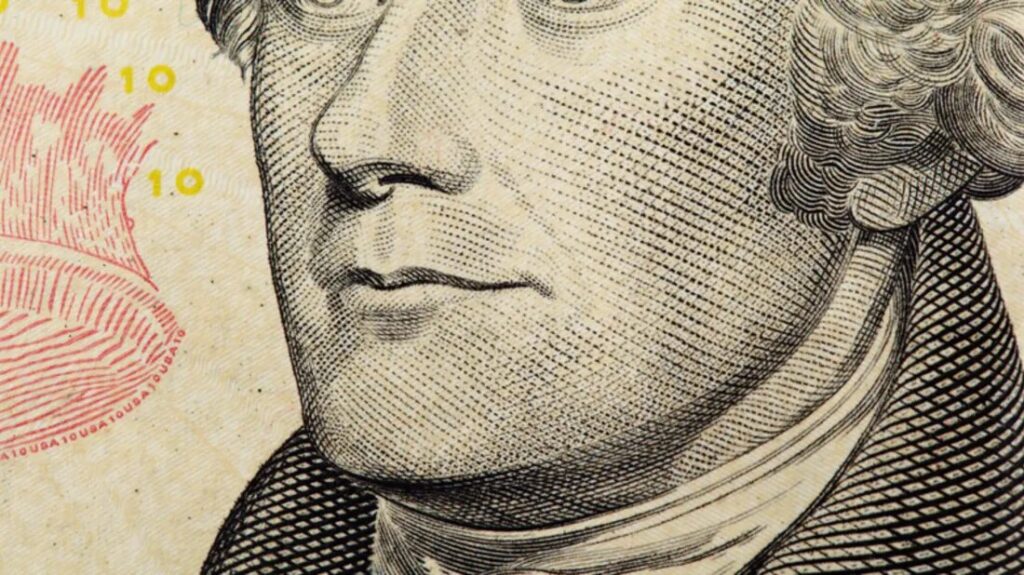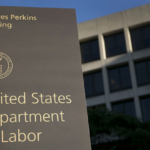The U.S. Virgin Islands continues to rank among the Caribbean’s top tourist destinations, especially on Airbnb. But there’s more to the American islands than just fun in the sun, as first reported by Mental Floss.
Many historic figures have visited or lived in the region (Alexander Hamilton, anyone?), which, over the centuries, was seized by warring European powers, consolidated and ruled over by Denmark, and formally purchased by the United States in 1917.
Today, the scenic U.S. territory consists of four main islands — St. Croix, St. John, St. Thomas, and Water Island — and around 50 smaller islets and cays. Here are nine notable people with ties to their sunny shores.
1. ALEXANDER HAMILTON
In case you haven’t been paying attention to the hubbub surrounding the Founding Father (it’s OK: we couldn’t get tickets either), the Virgin Islands played an integral role in Hamilton’s coming-of-age story. As a young man, Hamilton moved to St. Croix, where, at the age of 17, he penned a moving account of the devastation caused by a recent hurricane. This letter, published in the Royal Danish-American Gazette, inspired the community to raise the funds needed to send him to North America, where they felt he could receive a proper education.
2. CAMILLE PISSARRO
Camille Pissarro (1830-1903) was an Impressionist and Neo-Impressionist artist whose realistic, open-air paintings depicted the everyday lives of French peasants. But long before he moved to Paris, befriended (and influenced) up-and-coming figures like Paul Gauguin and Paul Cézanne, and became commonly regarded as the “father” of an artistic movement that bucked the European establishment, Pissarro grew up on the island of St. Thomas.
The son of a French-Jewish father and a Dominican-born mother, Pissarro lived in St. Thomas until his family sent him to boarding school in Paris. There, Pissarro developed his interest in French art. After six years, Pissarro returned to St. Thomas and worked in his parents’ general store, taking every spare moment to practice his drawing.
When Pissarro was in his early 20s, he moved again, this time to Caracas, Venezuela. Pissarro spent two years studying with Danish artist Fritz Melbye, and then briefly returned home to St. Thomas before leaving once more—this time for good—to pursue an art career in Paris.
3. WILLIAM ALEXANDER LEIDESDORFF JR.
William Alexander Leidesdorff Jr. (likely 1810-1848), a prominent 19th century San Francisco entrepreneur who’s today remembered as the “African Founding Father of California,” was born on the island of Saint Croix. Leidesdorff’s father was a Danish sugar planter, and his mother was of African descent. As a young man, Leidesdorff left the Virgin Islands for New Orleans to seek his fortune in maritime trade. He became a successful cotton broker, and later worked in New York, but the West’s siren call proved to much for him to resist: In 1841, Leidesdorff moved to a tiny port city in Mexican-ruled California called Yerba Buena. Eventually, the sleepy settlement would grow into San Francisco.
Leidesdorff quickly became one of early San Francisco’s movers and shakers. He opened the city’s first hotel, “the City Hotel,” established a general store and a lumberyard, built a cargo warehouse, and ran the Bay Area’s first steamboat.
Eventually, Leidesdorff—who became a Mexican citizen in 1844 and received a massive, 35,500-acre land grant from the government—made a foray into politics. He served as president of San Francisco’s school board and City Treasurer, and in 1845 the ambitious businessman was even named U.S. Vice Consul to Mexico under President James Polk’s administration.
By the time he passed away in 1848, Leidesdorff was San Francisco’s wealthiest man, with a fortune worth more than $30 million in today’s money. Historians remember Leidesdorff as one of the founding members of a great American city, and as the nation’s first African-American diplomat and millionaire.
4. SIR FRANCIS DRAKE
Nobody knows if Sir Francis Drake (1540 or 1544-1596)—the Elizabethan-era privateer, sea captain, and explorer who became the first Englishman to circumnavigate the Earth—ever truly stepped foot on the Virgin Islands. But if you travel to the north coast of St. Thomas, you can hike to the top of a lookout point that looms high above the island’s most beautiful beach, Magens Bay. There sits a bench called Drake’s Seat, installed in 1933. It’s said that Drake anchored his ships in the waters below, and climbed this hill to scan the horizon for ships to plunder. The tale is most likely a myth—but with such a stunning view, who’s complaining?
5. THE JAMESTOWN SETTLERS
In 1607, England established Jamestown—the country’s first permanent settlement in the Americas—in Virginia. But before Captain John Smith and his band of colonists arrived in the New World, they first made a pit stop on the island of St. Thomas. They stayed there three days before finally embarking on the final leg of their voyage to America.
6. BLACKBEARD
Edward Teach (1680-1718)—better known as the infamous pirate Blackbeard—plundered ships across the Caribbean and North America’s southern coasts. There’s no official record that he also terrorized the U.S. Virgin Islands. But according to local lore, Blackbeard once used the island of St. Thomas as a base. There, he set up shop in a military watchtower perched high atop a hill in the city of Charlotte Amalie.
Built by Danish colonists in 1679, the structure was originally called Skytsborg Tower, which means “protection tower” in Danish. But over time, locals took to calling it Blackbeard’s Castle. Today, it’s a popular tourist destination.
7. JEAN HAMLIN
Blackbeard may have never set foot on the U.S. Virgin Islands, but the territory was frequented by another historic 17th-century pirate: Jean Hamlin. Hamlin was a French buccaneer whose ship, La Trompeuse (French for “deception”), preyed on British merchant ships in the Caribbean.
During the late 1600s, St. Thomas’s Danish governor, Adolph Esmit, was lenient toward pirates. He even purchased the swashbuckling seafarers’ loot, and provided them with assistance and protection. Aware of Esmit’s loyalties, Hamlin came to St. Thomas to escape British authorities—but in 1683, his ship was discovered by Captain Charles Carlile and the English warship HMS Francis.
A brief skirmish ensued, and Danish troops helped Hamlin fend off his British foes. In a second battle, the British set fire to Hamlin’s ship—but the pirate and his crew escaped, and hid in Charlotte Amalie with Esmit’s help.
Hamlin hijacked a frigate, sailed it to Brazil, and assembled another pirate crew. Esmit’s support for the pirate, however, got him into trouble with other islands’ governors and the Danish crown. As for the sunken La Trompeuse, it’s reportedly never been located—and some people believe it holds treasure.
8. EDWARD WILMOT BLYDEN
Edward Wilmot Blyden, best known as the father of Pan-Africanism, was a prominent intellectual, writer, and politician. Blyden was born on Saint Thomas in 1832; his parents were both free and literate, and put a premium on their son’s education. A local clergyman took the young Blyden under his wing, and encouraged him to apply to a theological college in New Jersey. Blyden, however, was turned away due to his race. In 1851, Blyden accepted a teaching position in the newly-independent Liberia, where he quickly rose to international prominence, publishing a variety of books and treatises on the subject of racial equality. Blyden’s work would serve as a foundation for other great thinkers as well, including W.E.B. Du Bois and Marcus Garvey.
9. PETER BENTZON
Peter Bentzon (born around 1781 or 1783) was such a skilled Colonial silversmith that he became the first craftsman of African descent to be identified by his own maker’s mark. He was born on the island of Saint Thomas to a European father and a free African-Caribbean mother. At the age of 8, Bentzon left the Virgin Islands to study in Philadelphia. In his mid-to-late teens, he served as a silversmith’s apprentice, and by the age of 23 Bentzon had established his own business in Saint Croix.
Bentzon spent most of his living and working in either the Virgin Islands or Philadelphia. Today, historians have identified nine pieces of silver marked P. BENTZON and PB—and further cementing his legacy, the Smithsonian’s National Museum of African American History and Culture recently acquired a silver-and-wood teapot forged by Bentzon for its collections.
There’s more to the U.S. Virgin Islands than gorgeous beaches (although they’ve got plenty of those, as well). Rich culture, delicious food, and incredible history await you, too. Click over to VisitUSVI.com for more info about how to visit during coronavirus.



